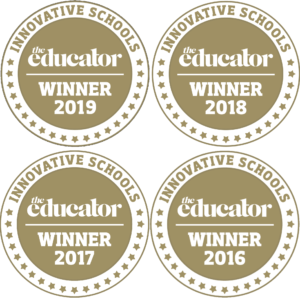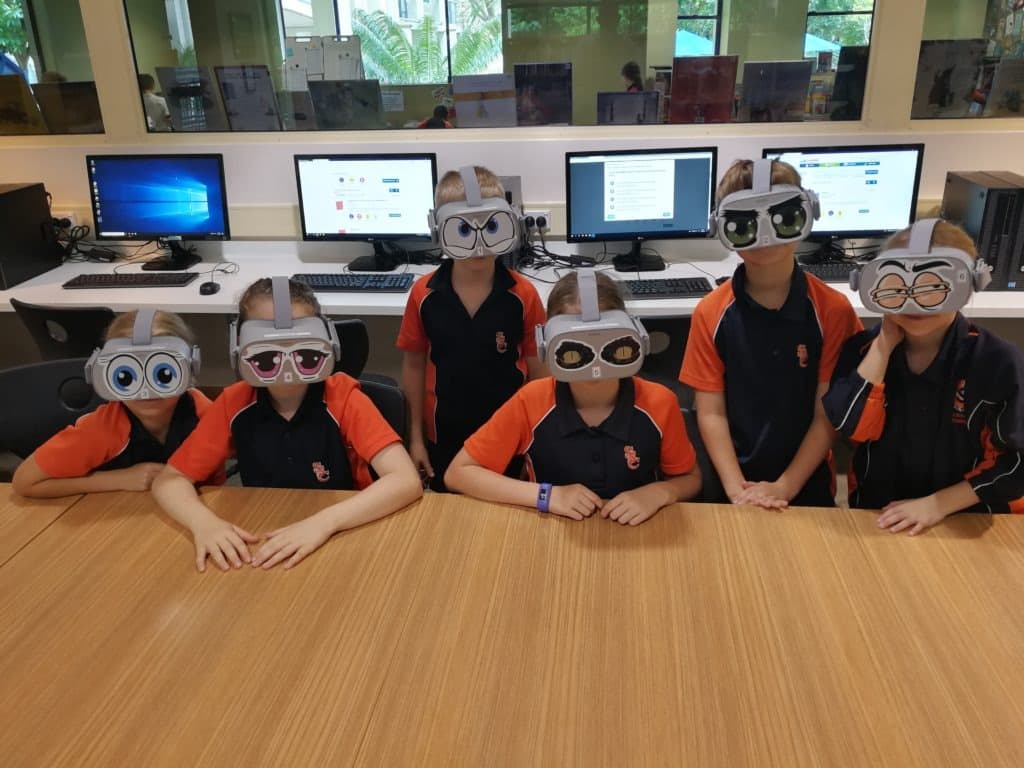Technology and Learning
Life at Saint Stephen's College
Some things make learning more engaging; things such as innovative teachers, a friendly and safe environment, bright and colourful classrooms, and well-groomed grounds and physical spaces. At Saint Stephen’s College, these positive features occur by design and as a by-product of our mission to enhance teaching and learning.
All Year Levels – BYOL Policy Document (Guidance for purchasing a laptop)
BYOL Parent Evening 2023 (Presentation)
Pen-Based Computers (The Effect on Learning)
The majority of the curriculum in Years 7 to 12 is delivered via our Learning Management System. The Desire to Learn (D2L) Brightspace LMS provides many informative resources at any time and from anywhere, including during class, after school and on weekends. This ubiquitous access to content is crucial for our personalised learning philosophy. Students can learn in an asynchronous way to fit in with their lifestyle and other pursuits such as TAFE and VET courses, sport training and competition, and other events that life can often present.

Our students have embraced the technology and eLearning programs implemented throughout the College, so much so that it is just a normal part of their day – which really puts them at the forefront of technology adaptation and of their generation. Our eLearning program has been designed to prepare students for a dynamic, digitally based future and has gained both national and global recognition, as shown in this recent article Saint Stephen’s: enhanced eLearning about more than technology courtesy of the ‘The Australian’.
Overview
Saint Stephen’s College offers academic courses that have modern technology infused into them. In addition to in-class technology support, the College also provides technology-training programs for staff and students. The technological environment at Saint Stephen’s College provides a fast and reliable network that incorporates:
- State-of-the-art infrastructure
- A whole-of-campus latest generation wireless network
- Safe high-speed internet access
- The ability to view student internet access history from a web console
- Digital projectors with wireless laptop projection
- A BYOL (Bring Your Own Laptop) program from students in Years 5 to 12
- Touch screen devices with digital pens in Years 5 to 9
- A class set of shared laptops in each year for Years 3 to 4
- An iPad program in Prep, Year 1 and Year 2
- Specialist faculty iPads in Physical Education and Music
- Four desktop computer laboratories providing more powerful computers for high intensity subjects
- A virtual learning environment which includes online courses (across all Secondary faculties) that students can participate in at any time, from anywhere
- A focus on technology enhanced learning, which amalgamates the best aspects of technology and the best aspects of teaching
- A focus on emerging technologies such as Augmented and Virtual Reality, 3D printing and robotics
- The very best touch screen Windows 10 computers, enabling teachers use digital inking and circulate the classroom while wirelessly projecting to the screen.Watch how well one of our students articulates the power of technology-enhanced learning at Saint Stephen’s College in this SBS Insight episode. (The amazing Alani speaks at 17:00, and at 31:34 you will get a fantastic overview of life at Saint Stephen’s College)
Learning with Immersive Realities
Teacher Generated Flipped Videos with the Lightboard
The lightboard provides a ‘human’ experience, with the teacher’s gestures and expressions visible. Students can replay the lightboard explanation as many times as necessary. These videos replicate a teacher-directed lesson in the classroom, with more dynamic content and the ease of functionality that allows for the student to replay the content for reinforce understanding.
3D Science
Getting a real insight into many things, such as cells and body systems, is difficult. Pictures in text books are flat and unrealistic but have been one of the few options available. Our large screen 3D television runs 3D software which students can view with wear special glasses. This allows students to ‘look inside’ body cells, a beating heart and other organs. The whole class can get a more realistic ‘picture’ of how systems really work, which generates more class discussion.
Augmented Reality ‘sandpit’
Playing in a sandpit takes on new meaning with our Augmented Reality sandpit. Complex geographical modelling can be done instantly, creating mountains, valleys, seas and more. Virtual rain or an erupting volcano can be created with the movement of a hand thanks to the power of high-tech sensors. Contours on landscapes are projected onto the shapes, and the heights are indicated through different colours. This device amazes all who use it.

Virtual Reality
VR is the next best thing to being there. When students enter the immersive world of Virtual reality via one of our 14 Oculus headsets, they can be a part of micro and macro worlds. In Science, that includes a guided, interactive tour of the Human Body or Space. In Humanities, students can view 360 videos of the places that they are studying.
Virtual Reality Creation and 3-Dimensional Spaces
It is one thing to consume content, but our aim is for our students to create content. Using tools like CoSpaces, our students are creating games and virtual presentations that can be viewed on VR headsets. The content is enhanced through coding, so that objects can interact with each other and be triggered by the user. In Digital Solutions, students are creating interactive 3D worlds in cross-curricula projects which they can walk through in virtual reality.